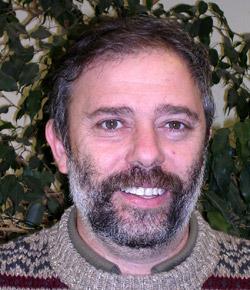Gastvortrag von Prof. Saal: âBudget of volatiles: from where, when, and how water came to Earth-Moon systemâ
Geo-Kolloquium am 06.06.17 um 13 s.t.

Establishing the origin of water and other volatiles, and how and when the budgets of these elements were set in planetary bodies during the earliest stages of Solar System evolution has important implications for understanding the genesis and evolution of the terrestrial planets and the origin of life. The Moon provides a frozen record of the first few hundred million years of Solar System evolution and, thus, offers a unique opportunity to establish the origin, budget and timing of the water, and other volatiles, delivery to the terrestrial planets. Presently, there are two distinct views: one, suggesting that the Moon is âbone-dryâ, 100 to 1000 times more depleted in highly volatile elements (e.g., water) than Earth. The second view suggests that the Moon is only 5 to 10 times more depleted in highly volatile elements than Earth. Therefore, the estimated extent of the Moonâs volatile depletion differs between the two views by a factor of 20 to 200. We show that the 20 to 200 factor in the estimated Moonâs volatile depletion might originate from the fact that the degassing of volatile elements during lunar magmatic processes has not been carefully considered. We have to account for the effect of magmatic degassing before we can estimate the extent of volatile depletion of the Moon.
Alberto E. Saal was born in CÃģrdoba, Argentina. He received his Ph.D. in Geology from the Geology Department at the Universidad Nacional de CÃģrdoba in 1993. He moved to the USA, where he obtained an M.Sc. in Geochemistry at the Massachusetts Institute of Technology in 1994, and a second Ph.D. in Oceanography at the Massachusetts Institute of Technology/Woods Hole Oceanographic Institution Joint Graduate Program in 2000. Alberto continued his studies as a postdoctoral fellow at the Lamont-Doherty Earth Observatory (LDEO) of Columbia University in 2001 and became Associate Research Scientists at LDEO and Storke-Doherty Lecturer at the Department of Earth and Environmental Sciences, Columbia University until 2003. In 2003 he joined the faculty of the Department of Earth, Environmental and Planetary Sciences at Brown University, where he is now full professor.
Alberto uses high-precision isotope, major, trace and volatile element analysis of geo-materials to understand the formation and evolution of the Earth and the Moon. The main objective is his work is to determine the composition, age, spatial scale, distribution and formation processes of the different reservoirs that form the Earth and its satellite. Amongst his most important scientific contributions are his studies on the content and origin of the volatiles in the Moon and Earth interiors. Results of those studies have produced a paradigm shift, challenging the long-standing views on the formation and evolution of our planet and its satellite. Alberto also provided major insights into the nature and origin of chemical heterogeneities in the Earth and Moon interiors by pioneering the in-situ analysis of Pb isotopes at a very high spatial resolution ~30 Âĩm in glass inclusions (minute pieces of melt trapped in crystals that grow in the magma before eruption); and by challenging the interpretation of U-series and other chemical tracers in order to separate the geochemical fingerprints that are truly representative of the deep Earth and Moonâs interiors from those produced by shallow-level processes.
Weitere Informationen:
Wolfgang Bach

